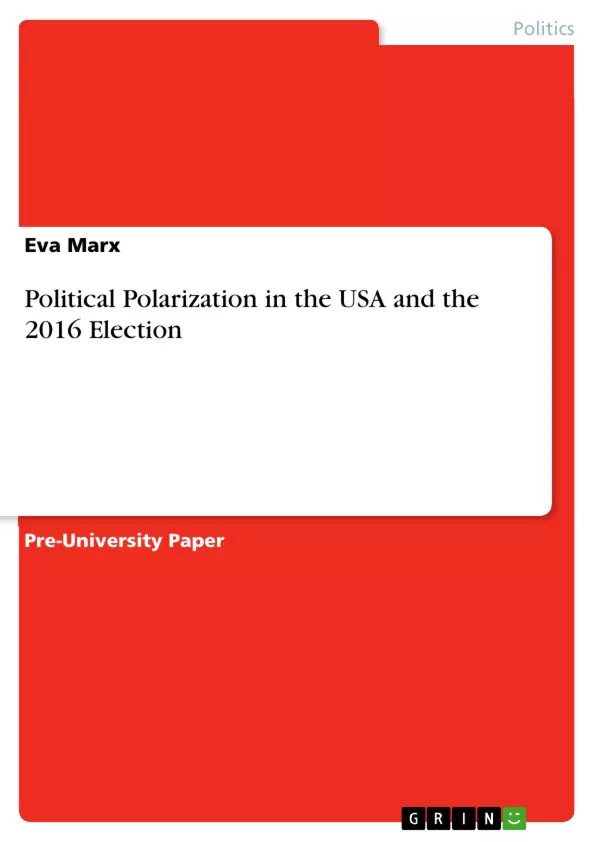The research paper attempts to explain the election of former business man and TV personality Donald J. Trump as the 45th president of the US. Even though struggling in the polls during his inexplicable and unprecedented election campaign, he managed to win the presidential election against his opponent Hillary Clinton on the 8th November 2016.
Trump was able to profit from a progress taking place in America for decades, separating the population into liberal or conservative, Democrat or Republican. He ran an election campaign of nostalgia and used the populist, anti-establishment fraction of his party for his own sake. Moreover, Trump had the "perfect" opponent Hillary Clinton, since she was seen as the prototype of the political elite in Washington.
In order to analyze the background of the presidential election, the author refers to several scientific books and various surveys concerning American politics and the American population.
It is hoped that this research paper successfully informs the reader about the reasons behind the victory of Donald J. Trump.
Table of Contents
- 1. Introduction
- 2. Overview
- 2.1 Literature
- 2.2 Background Information
- 3. Analysis
- 3.1 America as a Divided Country
- 3.2 Campaign Against All Elites
- 3.3 Clinton as Trump's Political Opponent
- 4. Conclusion
- 4.1 Final Answer to Research Questions
- 4.2 Prospect: The 2020 Election
- 5. References
- 5.1 List of References
- 5.2 List of Figures
- 5.3 List of Surveys
- 6. Declaration of Independent Scientific Work
Objectives and Key Themes
This research paper examines the 2016 US Presidential election, specifically focusing on the political polarization within the country and the factors that led to Donald Trump's victory. The paper aims to understand how the political landscape in the US became so divided and how Trump capitalized on this division to promote his campaign. The paper also explores the role of Hillary Clinton's nomination as Trump's opponent in the electoral outcome.
- Political polarization in the US
- The 2016 Presidential election
- Trump's campaign strategy
- The role of Hillary Clinton in the election
- The potential implications of the election for future US politics
Chapter Summaries
- Introduction: The introduction sets the context for the research paper by highlighting the unexpected outcome of the 2016 US presidential election and the author's interest in understanding the underlying factors. It outlines the key research questions and the structure of the paper.
- Overview: This chapter provides a brief overview of the literature used in the analysis, focusing on books that delve into the life of Donald Trump and the political landscape of the US. It also includes biographical information about Donald Trump, highlighting his family history, business ventures, and public image.
- Analysis: This chapter explores the political developments that have led to the polarization of US politics, particularly focusing on the rise of Trump's campaign strategy and the role of Hillary Clinton's nomination. It delves into how Trump's campaign appealed to a segment of the population disillusioned with the political establishment.
Keywords
This research paper focuses on the key terms and concepts of political polarization, the 2016 US Presidential election, Donald Trump's campaign strategies, the role of Hillary Clinton, and the implications of the election for the future of US politics. It examines various aspects of the political landscape, including the historical context of American politics, the rise of populism, and the use of social media in political campaigns.
- Arbeit zitieren
- Eva Marx (Autor:in), 2018, Political Polarization in the USA and the 2016 Election, München, GRIN Verlag, https://www.grin.com/document/498029



